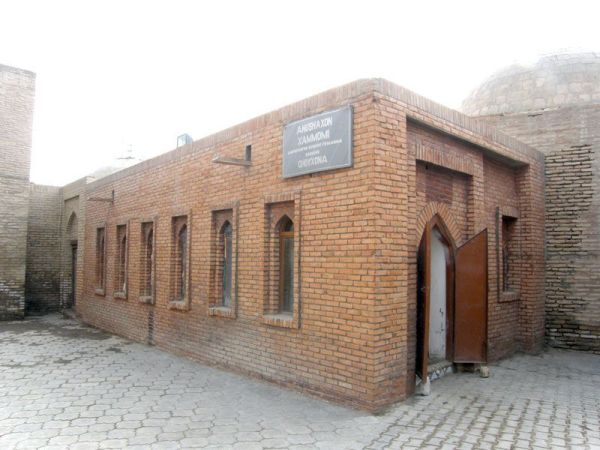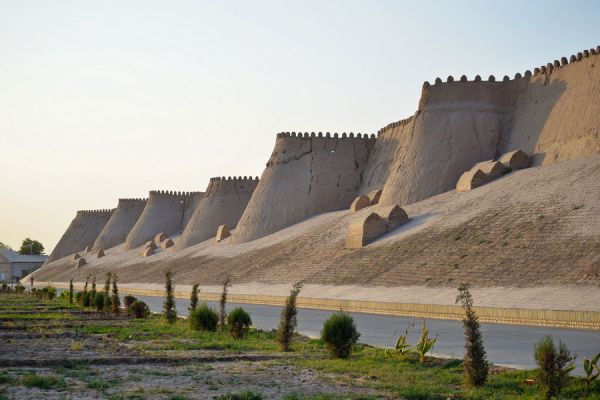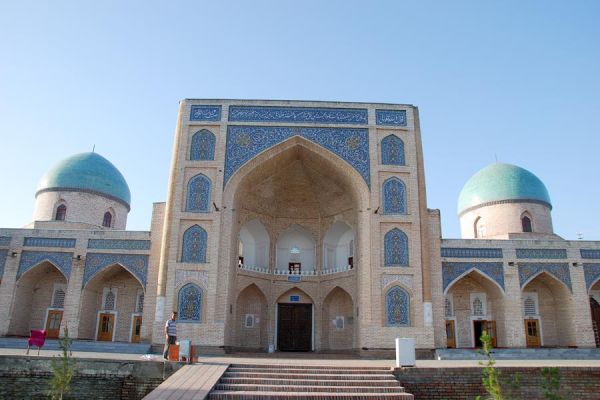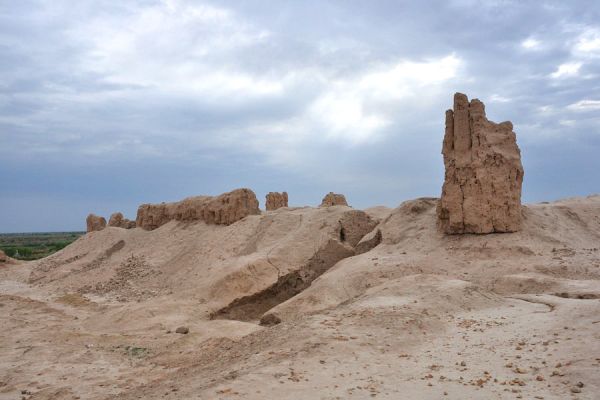Baths of Anush Khan
Not far from the Ak Mosque ("White Mosque") in the historical part of the city of Khiva, the ancient baths of Anush Khan are visible. Historians attribute their foundation to the years 1657-1664 — evidence of their construction is left in the works of the famous historiographer Abulkazi Khan, the father of Anush Khan. Like many buildings in the ancient world, baths were built for centuries, and they impress with the thoughtfulness of water supply, heating, and sanitation systems.
Baths were the waqf of the Ak Mosque, meaning they were property from which income went to the maintenance of the mosque or for charitable purposes.
It is known that in the east, baths have long played a significant role in culture, society and urban civic architecture. The baths of Anush Khan in Khiva are the earliest architectural monument of the city for this purpose, therefore they are of particular value as an example of architecture in the Middle Ages.
The interior of the bathhouse of those times included a spacious lobby, secluded rooms for clothes, and soap rooms. The Khan of Khiva built baths with lower heating coming from the depths of the floor, under which, in order to preserve heat, semi-underground chambers were equipped. The water for the procedures was taken from a well located near the boiler room. Small rooms were equipped around the central hall, each of which performed its own function. From the outside, you can only see the domes of the baths with holes for light, since most of the baths are underground to keep as much heat as possible.
The baths of Anush Khan are interesting because the technologies used in construction are quite advanced for the middle of the 17th century. Ancient buildings are not inferior to modern baths in convenience and efficiency. The complex of baths was preserved in good condition and after three and a half centuries continued to serve as a hospital and wellness center of the city.
History of origin
The baths, named after Anush Khan, were built in honor of the tenth son of Abulkazi Khan. There is an unusual legend about the life of a father and son. Abulkazi Khan was one of the most respected rulers of Khiva. He had nine sons, and while waiting for the birth of his tenth child, Khan longed for a beautiful daughter to be born. However, fate decreed that a boy was born again in the Khan's family. Not wanting to upset the father, the sex of the child was hidden from him for many years. The baby was named after the beloved concubine of the Khiva ruler, the Armenian Anusha.
Years passed, and then one day Abulkazi Khan's military luck changed, he was captured in one of the battles by the emir of Bukhara. The nine eldest sons were not much concerned about their father's fate, secretly hoping to take advantage of this chance and take his place. But the younger one, whose gender was still being concealed, did not hesitate to go in the guise of a girl to the court of the emir of Bukhara to rescue Abulkazi Khan. The emir chuckled at the fact that it was not the sons who came for the father, but agreed to Anusha's condition and promised to release the prisoner without harm if the young beauty could surprise the lord beyond words. That was the deal offered by the imaginary Anusha to the ruler of Bukhara. The Emir had seen a lot in his life and therefore did not expect that the girl would be able to truly surprise him. When Anusha threw off her girlish clothes, the emir saw the young man's body and had to admit defeat. Abulkazi Khan himself was as surprised as the others, but he was not angry at the years-long deception, as his son had saved him.
Anush and his father returned to Khiva, and upon their return, Abulkazi Khan said, "I thought I had nine sons, but providence has shown that I have only one son, Anusha." In gratitude for his release from captivity, the khan built a mosque and baths, which he named after his tenth son, Anush, who remained faithful to his father. For many years, the baths of Anush Khan remained the main wellness center of the city.























